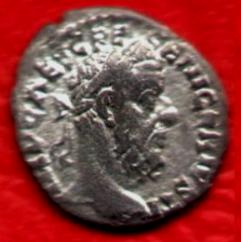The Official Ill Community Black History Thread
Options
Comments
-
Maximus Rex wrote: »The African Popes
The African popes in question are said to have come from the North African area that is present-day Algeria, Mauretania, Numidia, and Tunisia. Historians name this area the maghreb. Today it is mostly Muslim. The indigenous people of North Africa are Berbers, brown skinned as among the Tuaregs and Algerians.
Pope St. Victor
Pope St. Victor I (reigned 189-199) worked to settle a dispute among the bishops of the East and West over when to celebrate Easter – known as the Quartodeciman controversy. The other bishops recognized his unique authority when they followed his directive to convene local and regional synods to deliberate on the issue. Most of the bishops decided to adopt his proposal that the whole Church celebrate Easter on the first Sunday after Passover. Those who didn’t, he threatened with excommunication. The fact that no bishop in the world — not a single one — disputed his authority as bishop of Rome to carry out such an excommunication is a powerful piece of evidence that the early Church recognized the unique authority of the bishop of Rome.
It needs to be noted that some historians puts the start of the reign of Pope St. Victor with the first year of Septimius Severus (one of the African Emperor of Rome.) So at one point in time the two most powerful men in the world, one who controlled the known Western world from present day Britain to present day Iran and the other who was a later of large religious sect were black men. That's not black excellence, that's black dominance. Also Pope St. Victor decided on when Easter would be celebrated.
Pope St. Miltiades
Constantine presented the pope with the Lateran Palace, which became the papal residence and seat of Christian governance. Early in 313, Constantine and fellow Emperor Licinius reached an agreement at Milan that they would grant freedom of religion to the Christians and other religions and restore church property.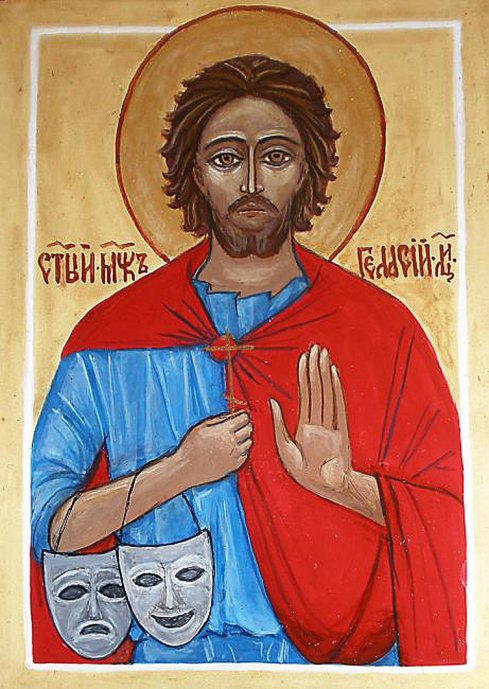
Pope Gelasius I
Was known was a prolific writer whose style placed him on the cusp between Late Antiquity and the Early Middle Age. He first pope to be called the Vicar of Christ, he proposed that spiritual and temporal powers are separate trusts from ? .
He isn't black ? needs their eyes check. he's a berber -
http://en.wikipedia.org/wiki/Denmark_Vesey
My college professor hipped me to dude. Everybody heard of Nat Turner and his insurrection, by Denmark kicked it off 10 years before he did. He told his followers to ? every white person, men, women and children with NF'sG. Unfortunately before they finished out the plot another slave told on them and they all got captured. And during his trail there were no pictures allowed to be drawn of him so that his legacy would die right there, til this day no one knows what he looks like.
Cop the book
"Denmark Vesey": The Buried Story of America's Largest Slave Rebellion and the Man Who Led It
In a remarkable feat of historical detective work, David Robertson illuminates the shadowy figure who planned a slave rebellion so daring that, if successful, it might have changed the face of the antebellum South. This is the story of a man who, like Nat Turner, Marcus Garvey, and Malcolm X, is a complex yet seminal hero in the history of African American emancipation.
Denmark Vesey was a charasmatic ex-slave--literate, professional, and relatively well-off--who had purchased his own freedom with the winnings from a lottery. Inspired by the success of the revolutionary black republic in Haiti, he persuaded some nine thousand slaves to join him in a revolt. On a June evening in 1822, having gathered guns, and daggers, they were to converge on Charleston, South Carolina, take the city's arsenal, murder the populace, burn the city, and escape by ship to Haiti or Africa. When the uprising was betrayed, Vesey and seventy-seven of his followers were executed, the matter hushed by Charleston's elite for fear of further rebellion. Compelling, informative, and often disturbing, this book is essential to a fuller understanding of the struggle against slavery.
-
http://en.wikipedia.org/wiki/Abdulrahman_Ibrahim_Ibn_Sori
A west African prince enslave in Natchez, MS wrote a letter to his family back in Africa, and since it was in Arabic, white people thought he was a Moor, therefor it went to the Moroccan consulate in America and he got freed that way. Learned about it during this traveling Islamic exhibit some years back. And Jackson,MS has the only Islamic museum in America, it talks about the African muslims -
Maximus Rex wrote: »Bartholomew_Jenkins wrote: »Ajackson17 wrote: »Tulsa stills ? me off.
That city is cursed, which is why they suffer the worse hurricanes. ? don't like ugly.
What thee ? ? Obviously you're not aware that Oklahoma is a land locked state that is bordered by Texas on it's southern border, New Mexico and Colorado to the northwest, (not Ye's little girl,) Kansas to the north, Missouri to the northeast, and Arkansas to the east. The nearest body of which is capable of producing hurricanes is the the Gulf of Mexico which is 822 miles away from Tulsa. ? really need to stay in school or at least study globes and atlases. Unless dude was confusing hurricanes with tornadoes.
You missed the whole point of the joke.
Tulsa's college team nickname -- Hurricanes. -
En-Fuego22 wrote: »Maximus Rex wrote: »The African Popes
The African popes in question are said to have come from the North African area that is present-day Algeria, Mauretania, Numidia, and Tunisia. Historians name this area the maghreb. Today it is mostly Muslim. The indigenous people of North Africa are Berbers, brown skinned as among the Tuaregs and Algerians.
Pope St. Victor
Pope St. Victor I (reigned 189-199) worked to settle a dispute among the bishops of the East and West over when to celebrate Easter – known as the Quartodeciman controversy. The other bishops recognized his unique authority when they followed his directive to convene local and regional synods to deliberate on the issue. Most of the bishops decided to adopt his proposal that the whole Church celebrate Easter on the first Sunday after Passover. Those who didn’t, he threatened with excommunication. The fact that no bishop in the world — not a single one — disputed his authority as bishop of Rome to carry out such an excommunication is a powerful piece of evidence that the early Church recognized the unique authority of the bishop of Rome.
It needs to be noted that some historians puts the start of the reign of Pope St. Victor with the first year of Septimius Severus (one of the African Emperor of Rome.) So at one point in time the two most powerful men in the world, one who controlled the known Western world from present day Britain to present day Iran and the other who was a later of large religious sect were black men. That's not black excellence, that's black dominance. Also Pope St. Victor decided on when Easter would be celebrated.
Pope St. Miltiades
Constantine presented the pope with the Lateran Palace, which became the papal residence and seat of Christian governance. Early in 313, Constantine and fellow Emperor Licinius reached an agreement at Milan that they would grant freedom of religion to the Christians and other religions and restore church property.
Pope Gelasius I
Was known was a prolific writer whose style placed him on the cusp between Late Antiquity and the Early Middle Age. He first pope to be called the Vicar of Christ, he proposed that spiritual and temporal powers are separate trusts from ? .
He isn't black ? needs their eyes check. he's a berber
And yet we have another one those "despite Africa being the continent in which humanity traces it origins to and Africa being a continent that is populated with literally millions of people with a high melanin content, none of those people managed to do anything with worth any importance or contribute to humanity at large."
This is insulting bruh. It's analogous to saying that, "Yeah paper making and gunpowder were developed in China, but the Chinese had no part in the invention of paper making and gunpowder, despite the fact that the China is populated with Chinese people, really bruh?
AFRICAN MOORS: THE APPEARANCE OF THE ORIGINAL BERBERS ACCORDING TO EUROPEAN PERCEPTIONS
http://www.africaresource.com/rasta/sesostris-the-great-the-egyptian-hercules/the-appearance-of-the-original-berbers-according-to-european-perceptions-by-dana-marniche/
SEPTEMBER 12, 2008 DON JAIDE
The Appearance of the Original Berbers According to European Perceptions
All the early major Berber tribes including the Masmuda, Sanhaja, Ketama Zenata and Nafusa are described as dark reddish brown like the “Indi’ or as “blacks” or Ethiopians in early documents. The notion of the early Berbers as being “whites” or Caucasoid is a new and racist one related to the concept of the African “Hamite”. Certainly the original Berber-speakers were never referred to as anything but “black” or something near it until the 12th century and were otherwise considered the color of Abyssinians and other so called “Indi”.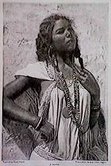
Kabyle Girl
Even the Kabyles a notoriously fair-skinned “Berber” people of North Africa are up until the 19th century described as “brown” “apart from a few clans”. (See quotes below). The knowledge that Europeans were changing the complexion literally and figuratively of North Africa up until the 19th century has disappeared from modern European histories. Most know about the large part played by sub-saharan black slaves in the making of modern North Africa and Arabia while the white slave trade which was in fact dominant trade in North Africa until the fall of Constantinople (Istanbul in Turkey) in the 15th century had been largely ignored in historical writings of the 20th. Yet it was only a few centuries ago that Europeans visiting North Africa commenting on the fact that, “on almost every street of the cities of Barbary, Europeans could be seen harnessed to carts like draught horses or selling water from jars loaded on the backs of donkeys”.
1809 Commentary on those called “Moors” by an early 19th century observer: “They carry the Christian captives about the desert to the different markets to sell them for they soon discover that their habits of life render them unserviceable , or very inferior to the black slaves of Timbuktoo. “ from An Account of the Empire of Marocco, by J. G. Jackson published 1809 and 1814.
2003 – “From 1500 to 1650 when trans-Atlantic slaving was still in its infancy more Europeans were taken to Barbary than black African slaves to the Americas. See, Robert Davis Christian Slaves, Muslim Masters: White Slavery in the Mediterranean, the Barbary Coast, and Italy, 1500-1800, MacMillan Publishers, published 2003.
The impact of the white slave trade and its contribution to the modern biology and appearance of the modern North African stems from before the Arabian and Muslim waves into Africa. The Roman ruler Claudian spoke concerning Gildo, the “Moorish” ruler of Africa and treatment of Roman women from the Levant by this North African chief and his countrymen:
-
Berbers are Black Pt. II
4th century – Claudian wrote, “ when tired of each noblest matron Gildo hands her over to the Moors. These Sidonian mothers, married in Carthage city must needs mate with barbarians. He thrusts upon me an Ethiopian as a son-in law, a Berber as a husband. The hideous hybrid affrights its cradle.” Claudian, by Claudius Claudianus, translation by Maurice Platnauer, Published by G.P. Putnam’s sons, 1922 p. 113. (Gildo was brother to other Berber chiefs Firmus and Maseczel. Gildo is related to Aguellid or Galdi which remains the modern Tuarek word for chief. Masek, Amazigh ot Imoshagh was the name for the ancient and modern Tuareg clans in general. The Mezikes tribes were called “Ethiopians” in a Roman text of the time. )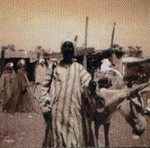
Kayble boy1
1stt c. A.D. – “Diodorus Siculus speaks in reference to the expedition of Agathocles a Sardinian general, of three Libyan tribes on the coast of Tunisia, the Micatani and Zufoni (see Zafan ),who were nomads and the Asfodelodi, who by the color of their skin resembled the Ethiopians” , p. 50 The Mediterranean Race Book ? , 38, 57 Guiseppe Sergi, 1901. The Micatani were also called Ukutameni and Khethim by Josephus. In later writings they are called Ketama Berbers. The name Maketa or Imakitan remains a name for the eastern branches of the Tuareg.
1st century A.D.– Marcus Valerian Martial was one of the earliest Europeans to use the phrase “woolly hair like a Moor” in one of his Satires, and the phrase was commonly used up until the Middle Ages. See Nature Knows No Color Line by J.A. Rogers, 1952. p. 50 The Muslim era didn’t begin until the birth of Muhammed, the Prophet, over four centuries after Martial. By the 7th century the word came to be used for Arabians who in the early era of Islam for the most part were also described as of near “black” complexion.
1st century Silius Italicus also describes the Moors with the term ‘Nigra’ meaning black. In the 3rd century Roman dramatist Platus or Plautus maintained the name Maure was a synonym for “Niger” which was a common term for the word black. 6th century Isidore Archbishop of Seville claimed the word Maure meant black according to Brunson and Runoko Rashidi in “The Moors in Antiquity” in Golden Age of the Moor, 1991.
6th A.D.- Corippus uses the phrase “facies nigroque colorus” meaning faces or appearance of black color to describe the North African Berbers. In his book Johannis, I/ 245.
6th A.D. – Procopius in his History of the Wars book IV contrasting the Germanic Vandals who had settled in North Africa with the Maures claimed the Vandals were not “black skinned like the Maurusioi” . The tribes he classified as Maurusioi are those now classified as ancient Berbers, the Numidians, Masaesyle, Gaitules, Massyles and Mezikes several other “Berber” tribes then settled between Tunisia and Morocco.
After the 8th century the term Moor came to be used for the many Arabian clans who had invaded the Mediterranean and Africa because of their complexions which were the same dark brown or near black to absolutely black color of the Berbers.
-
Ill-planned finances
While the federal government paid for building a complex structure, it failed to effectively take into account the ongoing costs of maintenance. The revenue model was based on rent, which the dwindling residents could not afford in order to hire skilled handymen to maintain their buildings. By the end of the 1960s, rents were increased three times in one year stretching low-income residents thin. Some residents paid up to three-quarters of their income to live in Pruitt-Igoe. This resulted in rent strikes and nine months of negotiation after which the Housing Authority finally gave in and restricted rents to a quarter of the residents’ income. This victory, however, was short lived as years of neglect placed buildings on the verge of physical collapse. In the winter of 1970, water lines and sewage lines broke, flooding the complex with ice while residents’ heating facilities lay broken – this dealt a final blow to Pruitt-Igoe.
Draconian rule enforcement
The Welfare Department imposed and enforced stringent restrictions. Most notably, residents were not allowed to have able-bodied men in their house if a woman was receiving help for her dependent children, leaving many women and children without husbands and fathers. Furthermore, residents were not allowed to keep telephones or televisions in their apartments. Such stipulations made residents feel that were being strategically isolated and restricted almost to an inhumane extent, as if the price of receiving welfare was to live by punitive rules.
Racial segregation and stigmatisation
Urban historian Joseph Heathcott claims that public housing in St. Louis was always used as a tool for segregation and that St. Louis did everything in its power to prevent “? deconcentration” i.e. African Americans moving out of particular neighbourhoods. Every project was imagined as a white or black project and was placed on the map in ways that deepened the pockets of segregation in one place or the other, radically creating racial distinctions in a way that no other form of legislation was able to do.
Moreover, ill-enforced rules and poor maintenance stigmatised Pruitt-Igoe’s residents to be associated with drug abuse, crime, and black poverty. In a resultant backlash, residents saw law enforcement and medical assistance as the enemy, oftentimes raining down bricks and fire bombs on them, so much that police officers and firemen refused to serve the complex.
The Pruitt-Igoe Myth of Public Housing
http://sustainablecitiescollective.com/ifmr-financing-small-cities/235081/pruitt-igoe-myth-public-housing -
Maximus Rex wrote: »This isn't your typical Black History thread which talks about the ? were slaves and then jumps to the Civil Rights movement. Thread is meant to share gems that when share with the Dominate Society, it will shake to the core the things that felt they knew about society. I'll start things off by talking about Saint Augustine of Hippo.

St. Augustine of Hippo "The Knowledgeable One,"
St. Augustine (November 13, 354 – August 28, 430), also known as Saint Augustine or Saint Austin,[4] was an early Christian theologian and philosopher[5] whose writings influenced the development of Western Christianity and Western philosophy. He was the bishop of Hippo Regius (modern-day Annaba, Algeria), located in Numidia (Roman province of Africa). He is viewed as one of the most important Church Fathers in the Western Christianity for his writings in the Patristic Era. Among his most important works are City of ? and Confessions.
St. Augustine is among the four eminent Fathers of the Church and he helped formulate the doctrine of original sin and made seminal contributions to the development of just war theory. Many Protestants, especially Calvinists, consider him to be one of the theological fathers of the Protestant Reformation due to his teachings on salvation and divine grace. Before finding ? , as a youth Augustine lived a hedony nistic lifestyle for a time, associating with young men who boasted of their bisexual exploits. The need to gain their acceptance forced inexperienced boys like Augustine to seek or make up stories about sexual experiences. As a result, St. Augustine is the patron saint of brewers, printers, and theologians. Augustine was also a major influence on the works of St. Thomas Aquinas.
St. Augustine was the son of St. Monica, who was born in Tagaste (present-day Souk Ahras, Algeria). She is believed to have been a Berber on the basis of her name. St. Augustine, Florida, (the oldest city in America,) is named after St. Augustine. Black Excellence
Any info on black roman emperors or senators?
-
I'm about to take this thread over.. potency.
-
Matter fact.. @Sion (Mod right?) we should delete this thread and let me start it over. No shots @Maximus Rex
-
Matter fact.. @Sion (Mod right?) we should delete this thread and let me start it over. No shots @Maximus Rex
There's like 2 days left LOLOL but if yall plan on carrying the thread afterwards tho yall let me know & we can do something over in Social Lounge.
That would be a good idea. Like ? say, black history shouldn't be regulated to shortest and coldest month of the year. -
Any info on black roman emperors or senators?
THE BLACK EMPERORS OF ROME: ROMAN EMPEROR CARACALLA (KARA-KALLA)
http://www.africaresource.com/rasta/sesostris-the-great-the-egyptian-hercules/the-black-emperors-of-rome-roman-emperor-caracalla-kara-kalla/
SEPTEMBER 25, 2010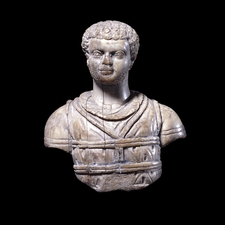
Ivory Bust of Emperor Caracalla: British Muesum
Emperor Caracalla – By Oguejiofo Annu
It was Bob Marley who sang that “2000 years of history could not be wiped away so easily.”
Lucius Septimius Bassianus (April 4, 188 – April 8, 217), commonly known as Caracalla, was a Black Roman Emperor who ruled from 211 to 217.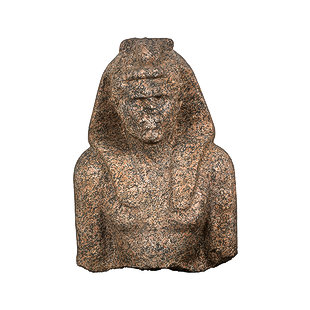
Caracalla was the eldest son of Septimius Severus, the first black African-born Emperor of Rome. But before Septimius Severus, there had been other Roman-born black Emperors of Rome. This story of the other black emperors of Rome will be explored in another write-up, but for now we focus on Caracalla.
Unlike his father Septimius Severus, Caracalla was born and raised in Italy. After the death of his father, he ruled jointly with his younger brother Geta until the latter’s death in 211.
Caracalla’s reign was notable for the Constitutio Antoniniana, granting Roman citizenship to freemen throughout the Roman Empire. That act laid a foundation for a peaceful multi-ethnic, multi-cultural Empire that Rome was to become.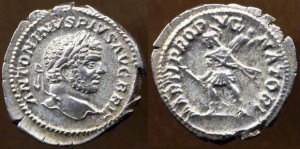
Caracalla was mean towards the military incursions of the Goths, the Parthians and the Tartars, and he took brutal and extreme steps to suppress those invaders from Turkemenistan that were sorely troubling the cohesion of the Roman state.
A modern-day British historian Edward Gibbon, a descendant of the Goths, referred to him as, “the common enemy of mankind” because of the massacres he authorized in various parts of the empire.
In AD 213, Caracalla went north to the German frontier and subdued the Alamanni tribesmen who were causing trouble in the Agri Decumates. Due to that feat the Senate conferred upon him the title of “Germanicus Maximus”.
In AD 216, Caracalla took on the Parthians, a related tribe of the Goths, (the Parthians are the ancestors of the modern day Farsi-Iranians) who were causing problems on the southernmost flank of the empire. He tricked the Parthians into believing that he accepted a marriage and peace proposal, but then launched a series of blistering attacks on the Parthians when their guards were down. The thereafter ongoing conflict and skirmishes became known as the Parthian war of Caracalla.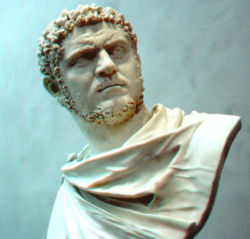
The baths of Caracalla were the largest public baths ever built in ancient Rome. To put it in historical perspective, the central room of the baths was larger than St. Peter’s Basilica. It could easily accommodate over 2,000 Roman citizens. The bath house opened in 216, complete with libraries, private rooms and outdoor tracks. Caracalla ordered the building of those baths that are named in his honour.
Caracalla was assasinated by his body-guard while travelling from Edessa to continue the war against Parthian. He died on April 8, AD 217.
It is important that Africans should remember and celebrate Caracalla and his family line, i.e. the Severan Dynasty, because as black Africans, they were us and we are them.
By the dint of their heritage, they were part of our legacy, and their attainments represented part of our unfolding tale of greatness, of towering historical achievements, of courage, regency and inimitable genius.
The descendants of the Goths who conquered Rome, and now control historical narratives, would want you to believe that they were the real Romans. Through centuries of selective narration and faking of historical artefacts, they have largely succeeded in hiding the central role of the Africans in the defunct Roman empire.
They hide the facts that the Goths and the Parthians (the ancestors of the present day Germans, Russians, British, Spanish, Italians, and Iranians…the Aryans!!!) were the mortal enemies of the dark Ibero-Maurisian Romans, Greeks, Egyptians, Libyans, and Numidians, Mauritanians, and Saharans, the original owners of western Europe. They promote a fake and false notion that Rome was a so-called white created civilization affiliated with their Gothic ancestry. But this is a lie!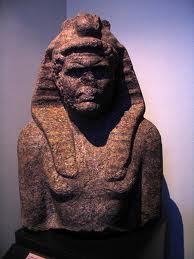
Black Roman Emperor Karakala
The memorials of Caracalla, Septimius Severus, Geta, Maximinus, and a long line of Black, Moorish, African Emperors of Rome reject this lie. We must revisit the Roman Empire and salvage the Black ancestors and Emperors that have been covered by the global western academic conspiracy.
Again we chant, blessings on the memorial of the Severan Dynasty, they were the “naigre” Emperors of Rome, from Africa. We will be meeting more Black Roman Emperors in the next series.
-
MOORISH EMPERORS OF ROME: EMPEROR DIADUMENIAN THE SON OF MACRINUS – BY OGUEJIOFO ANNU
http://www.africaresource.com/rasta/sesostris-the-great-the-egyptian-hercules/moorish-emperors-of-rome-emperor-diadumenian-the-son-of-macrinus/

Marcus Opellius Antoninus Diadumenianus or Diadumenian (d. 218) was the son of Roman Emperor Macrinus, who served his father briefly as Caesar from May, 217 to 218, and as Augustus in 218.
It should be recalled that Macrinus was a Moor, from an indigenous people of North Africa. He became an Emperor following the assasination of Caracalla, another Muurish Emperor of Rome, who was the son of Septimus Severus, another Muurish Emperor of Rome and the founder of the Severan Dynasty.
Diadumenian had little time to enjoy his position or to learn anything from its opportunities because the legions of Syria revolted and declared Elagabalus ruler of the Roman Empire. A civil war ensued.
When Macrinus was defeated on June 8, 218, at Antioch, Diadumenian followed his father’s death.
According to the Scriptores Historiae Augustae, his head was cut off and presented to Elagabalus as a trophy.
Diadumenian, A.D. 218 Nicopolis ad Istrum, Hera
OBVERSE: Draped bust right
REVERSE: Hera standing left holding patera.
25 mm – 10 grams -
PESCENNIUS NIGER, ANOTHER BLACK EMPEROR OF ROME – JIDE UWECHIA
http://www.africaresource.com/rasta/sesostris-the-great-the-egyptian-hercules/pescennius-niger-black-emperor-of-rome-jide-uwechia/
FEBRUARY 16, 2013 DON JAIDE
Pescennius Niger was descended from a family that originally belonged to Aquinum (now Aquino). His parents, Annius Fuscus and Lampridia were middle class. After holding various military commands, he was made Consul by Commodus, and at length was appointed commander of the Syrian army.
Emperor of Rome (193-194). He was a native of central Italy, from an elite Muurish Roman family. Yes he was a Muur, black as the night, and magnificent. During the reigns of Marcus Aurelius and Commodus he had kept the Germans from invading Roman territory.
In 192 he suppressed an insurgency sponsored by the Jews and Saracens.
He was among the high generals of the praetorian guards who plotted the take over of the empire after the death Roman Emperors Commodus and Pertinax.
After the death of Pertinax the prætorian guards proclaimed Didius Julianus emperor; then shortly after,the troops in Britain rebelled and elected Clodius Albinus; those on the Danube chose Lucius Septimius Severus; and the soldiers in Syria elected the governor of that province, Caius Pescennius Niger Justus.
Septimius Severus advanced to Rome with the Pannonian legions. Julianus was killed, and the senate acknowledged Severus.
Severus now made Albinus a co-emperor. Having bought off Albinus for the moment, Severus then addressed himself against Pescennius Niger.
Emperor Niger had many sympathizers and adherents at Rome making him very dangerous to Severus’ plan. Moreover, Antioch, where the proclamation of the rival emperor had been issued, aspired to the same position as Rome.
Pescennius Niger rallied the support of the petty Oriental rulers. He quickly prepared for war with Severus. He appointed the able proconsul of the Province of Asia, Asellius Æmilianus, as his chief of staff. The ports of Asia were closed; the passes over the Taurus mountains were fortified; and Byzantium was garrisoned.
Severus also had made far-reaching preparations. Troops were sent to Africa and the seasoned army of the Danube was brought together. The war had assumed an international dimension.
When the advance guards of the opposing armies met at Perinthus, the capital of Thrace, Niger’s army beat back the soldiers of Severus.
Severus, however, was undeterred and proceeded with his main army across the Bosporus and by way of Candeto near Cyzicus. Here in 194 a battle took place in which Æmilianus was slain.
Niger hurried to the scene with his army to provide back up but was defeated near Nicæa, with the result that most of the cities of the Province of Asia came into the hands of Severus.
Niger then fled to reach Antioch, to prepare his final stand.
Pescennius Niger lost Antioch when he was defeated in a battle fought south of Issus.
He sought a retreat among the the Parthians, but he was overtaken and killed towards the end of 194.
…..
Source:
The Catholic Encyclopeadia @ http://www.newadvent.org/cathen/11739a.htm -

Marble statue of the emperor Septimius Severus
Roman, about AD 193-200
Found at Alexandria, Egypt
'It is good to see the statue of Septimius Severus, the first African emperor of the Romans, on display. He is seen by many as a very important figure in the historical timeline of black people in Britain. He died and was buried at York. It is the only image of Septimius Severus I've seen to date that shows him with the features and looks of a North African. Seeing this statue in this gallery makes me feel that at last the African presence in ancient Britain is being acknowledged.' Fowokan George Kelly, of Jamaican origin
Septimius Severus was the first Roman Emperor born in Africa. He ruled between AD 193 and 211. Although his family was of Phoenician rather than black African descent, ancient literary sources refer to the dark colour of his skin and relate that he kept his African accent into old age. He was an accomplished general who, having defeated his internal enemies in a series of civil wars, went on to victories at the furthest frontiers of the Empire, from Mesopotamia to Britain, where he died, at York (Eboracum) in AD 211.
He is shown with his characteristic forked beard and tight curled hair, and is wearing military dress. The statue is not carved fully in the round, but is flat and unfinished at the back, suggesting that it was part of an architectural design. It probably stood in a niche which decorated a public building or monument such as a bath building or a fountain-screen. Much of the statue's detail would have been added in paint.
Severus' two sons Caracalla and Geta were instructed by their father on his death-bed to 'pay the troops, get on with each other and ignore everyone else'. Within a year, however, Caracalla had murdered his brother and reigned alone, with all vestiges of Geta's image and name removed from buildings, official inscriptions and dedications; a process known as 'Damnatio Memoriae'.
A.H Smith, A catalogue of sculpture in -2, vol. 3 (London, British Museum, 1904)
C. Scarre, Chronicle of the Roman emperor (London, Thames & Hudson, 1997)
-

Emperor Constantine, Black Roman Emperor sitting on his throne with his Bishops.
THE COUNCIL OF NICEA IN PICTURES – BY OGUEJIOFO ANNU
http://www.africaresource.com/rasta/sesostris-the-great-the-egyptian-hercules/the-council-of-nicea-in-picture/
Above and below you will find paintings of the original council of Nicea and the persons who sat on it.
Most of the paintings come from the Russian orthodox church. That church has never been shy about its relationship with the ancient Muurs and Ethiopian founders of Christianity.
Look at Emperor Constantine, another Black and Moorish Roman Emperor. He stands in the middle.
Behold all the great Muurish and Ethiopian Bishops sand Cardinals of those times.
Behold and recall again. This was Rome, in its hey days. This was the Roma that created the Christianity.
A picture is worth a thousand words.
Oguejiofo Annu
Question: "What occurred at the Council of Nicea?"
http://www.gotquestions.org/council-of-Nicea.html
Answer: The Council of Nicea took place in AD 325 by order of the Roman Emperor Caesar Flavius Constantine. Nicea was located in Asia Minor, east of Constantinople. At the Council of Nicea, Emperor Constantine presided over a group of church bishops and other leaders with the purpose of defining the nature of ? for all of Christianity and eliminating confusion, controversy, and contention within the church. The Council of Nicea overwhelmingly affirmed the deity and eternality of Jesus Christ and defined the relationship between the Father and the Son as “of one substance.” It also affirmed the Trinity—the Father, Son, and Holy Spirit were listed as three co-equal and co-eternal Persons.
Constantine, who claimed conversion to Christianity, called for a meeting of bishops to be held in Nicea to resolve some escalating controversies among the church leadership. The issues being debated included the nature of Jesus Christ, the proper date to celebrate Easter, and other matters. The failing Roman Empire, now under Constantine’s rule, could not withstand the division caused by years of hard-fought, “out of hand” arguing over doctrinal differences. The emperor saw the quarrels within the church not only as a threat to Christianity but as a threat to society as well. Therefore, at the Council of Nicea, Constantine encouraged the church leaders to settle their internal disagreements and become Christlike agents who could bring new life to a troubled empire. Constantine felt “called” to use his authority to help bring about unity, peace, and love within the church.
The main theological issue had always been about Christ. Since the end of the apostolic age, Christians had begun debating these questions: Who is the Christ? Is He more divine than human or more human than divine? Was Jesus created or begotten? Being the Son of ? , is He co-equal and co-eternal with the Father, or is He lower in status than the Father? Is the Father the one true ? , or are the Father, Son, and Spirit the one true ? ?
A priest named Arius presented his argument that Jesus Christ was not an eternal being, that He was created at a certain point in time by the Father. Bishops such as Alexander and the deacon Athanasius argued the opposite position: that Jesus Christ is eternal, just like the Father is. It was an argument pitting trinitarianism against monarchianism.
Constantine prodded the 300 bishops in the council make a decision by majority vote defining who Jesus Christ is. The statement of doctrine they produced was one that all of Christianity would follow and obey, called the “Nicene Creed.” This creed was upheld by the church and enforced by the Emperor. The bishops at Nicea voted to make the full deity of Christ the accepted position of the church. The Council of Nicea upheld the doctrine of Christ’s true divinity, rejecting Arius’s heresy. The council did not invent this doctrine. Rather, it only recognized what the Bible already taught.
The New Testament teaches that Jesus the Messiah should be worshipped, which is to say He is co-equal with ? . The New Testament forbids the worship of angels (Colossians 2:18; Revelation 22:8, 9) but commands worship of Jesus. The apostle Paul tells us that “in Christ all the fullness of the Deity lives in ? form” (Colossians 2:9; 1:19). Paul declares Jesus as Lord and the One to whom a person must pray for salvation (Romans 10:9-13; cf. Joel 2:32). “Jesus is ? overall” (Romans 9:5) and our ? and Savior (Titus 2:13). Faith in Jesus’ deity is basic to Paul’s theology.
John’s Gospel declares Jesus to be the divine, eternal Logos, the agent of creation and source of life and light (John 1:1-5,9); the "the Way, the Truth, and the Life" (John 14:6); our advocate with the Father (1 John 2:1-2); the Sovereign (Revelation 1:5); and the Son of ? from the beginning to the end (Revelation 22:13). The author of Hebrews reveals the deity of Jesus through His perfection as the most high priest (Hebrews 1; Hebrews 7:1-3). The divine-human Savior is the Christian’s object of faith, hope, and love.
The Council of Nicea did not invent the doctrine of the deity of Christ. Rather, the Council of Nicea affirmed the apostles’ teaching of who Christ is—the one true ? and the Second Person of the Trinity, with the Father and the Holy Spirit.
Read more: http://www.gotquestions.org/council-of-Nicea.html#ixzz3SryYc6ru -
The Africans who Taught the Ancient Greeks & helped civilize Europe)
Anthony Anaxagorou (Poet/Writer) explains how Europe was greatly influenced by African Civilization and why this historical fact has been suppressed or denied by many in modern academia. https://www.youtube.com/watch?v=qLk50p7YdK0
https://www.youtube.com/watch?v=qLk50p7YdK0 -
Egypt Scene “Richard Pryor Show” 1977
This is the skit that got his show taken off the air..lol https://www.youtube.com/watch?v=XVzCYmHI40g
https://www.youtube.com/watch?v=XVzCYmHI40g -
Maximus Rex wrote: »

Marble statue of the emperor Septimius Severus
Roman, about AD 193-200
Found at Alexandria, Egypt
'It is good to see the statue of Septimius Severus, the first African emperor of the Romans, on display. He is seen by many as a very important figure in the historical timeline of black people in Britain. He died and was buried at York. It is the only image of Septimius Severus I've seen to date that shows him with the features and looks of a North African. Seeing this statue in this gallery makes me feel that at last the African presence in ancient Britain is being acknowledged.' Fowokan George Kelly, of Jamaican origin
Septimius Severus was the first Roman Emperor born in Africa. He ruled between AD 193 and 211. Although his family was of Phoenician rather than black African descent, ancient literary sources refer to the dark colour of his skin and relate that he kept his African accent into old age. He was an accomplished general who, having defeated his internal enemies in a series of civil wars, went on to victories at the furthest frontiers of the Empire, from Mesopotamia to Britain, where he died, at York (Eboracum) in AD 211.
He is shown with his characteristic forked beard and tight curled hair, and is wearing military dress. The statue is not carved fully in the round, but is flat and unfinished at the back, suggesting that it was part of an architectural design. It probably stood in a niche which decorated a public building or monument such as a bath building or a fountain-screen. Much of the statue's detail would have been added in paint.
Severus' two sons Caracalla and Geta were instructed by their father on his death-bed to 'pay the troops, get on with each other and ignore everyone else'. Within a year, however, Caracalla had murdered his brother and reigned alone, with all vestiges of Geta's image and name removed from buildings, official inscriptions and dedications; a process known as 'Damnatio Memoriae'.
A.H Smith, A catalogue of sculpture in -2, vol. 3 (London, British Museum, 1904)
C. Scarre, Chronicle of the Roman emperor (London, Thames & Hudson, 1997)
Wow, this guy was really Black African? Amazing, I had no idea ancient Rome had a Black emperor. Gotta read more about him, props -
Black history month bump.
-
Knowing your history spreading the knowledge and consciousness bump.





 https://www.youtube.com/watch?v=5frVxbXhoN8
https://www.youtube.com/watch?v=5frVxbXhoN8


